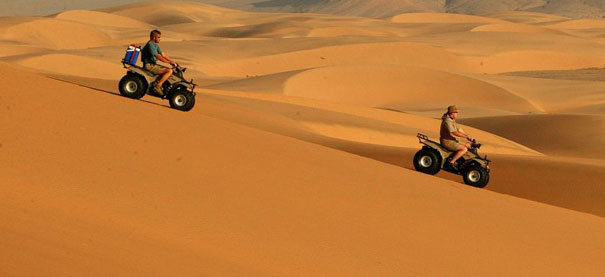Sossusvlei


Sossusvlei is generally regarded as one of the most spectacular landscapes in Namibia. The ‘vlei’ (only after a heavy rainfall, which is a rare event in this area, does the vlei fill with water) is situated at the point where the Tsauchab River dams up at the foot of a spectacular series of sand dunes, its route to the sea blocked. The spectacular ‘mountains of sand’, at a height of around 300 metres, are said to be some of the highest in the world and have developed over a period of many millions of years. It is thought that the vast quantities of sand were deposited over time into the Atlantic Ocean by the Orange River. This material was subsequently moved northwards by the Benguela current to be dumped back onto the land by the surf. Wind then pushed the sand upwards initially into coastal dunes, which over time were shifted further and further inland. Located about 50km inland from the Atlantic Ocean, Sossusvlei and the neighbouring Deadvlei and Hidden Vlei lie at an altitude of between 550 and 560 metres above sea level, with the dunes around the vlei rising 80 to 110 metres above this. The highest dune in the area is thought to be Dune 7 (apparently the seventh dune after crossing the Tsauchab River, and not to be confused with the famous Dune 7 near Walvis Bay) at approximately 380 metres.


Near the gate of the Namib Naukluft National Park lies the town of Sesriem, where we will be staying for the weekend. Sesriem gets its name from the days when early travelers needed to draw water from the Tsauchab River flowing through “Sesriem Canyon”. Because of canyon’s depth and steep walls, a rope made up of six leather thongs was just long enough for their bucket to reach the pools below. In Afrikaans “ses” is six and “riem” is the name for the leather thongs; hence Sesriem.
G & G